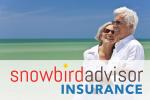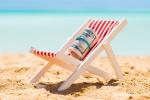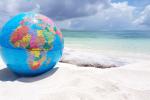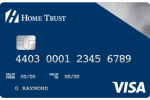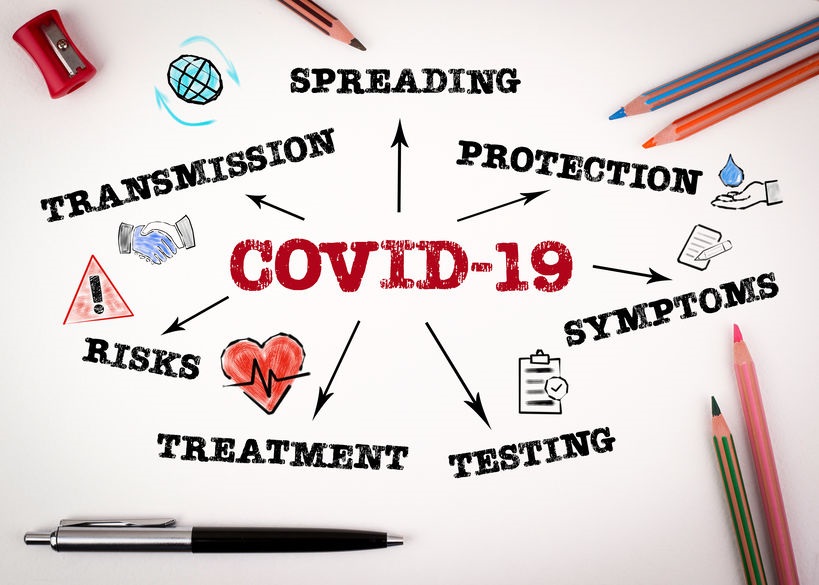
The following is a list of COVID-19 information and resources of particular importance for Canadian snowbirds and will be updated as new information becomes available.
Self-Isolation Requirements for Returning Travellers
Updated: April 16, 2020
- Starting on Thursday, April 16th, travellers returning to Canada will be subject to additional self-isolation requirements under the Quarantine Act.
- Specifically, all travellers returning to Canada are required to provide proof to a CBSA officer that they have a “credible quarantine plan”.
- A credible quarantine plan is one where you will not have contact with vulnerable people (people 65 years or older or people with underlying medical conditions) and you will have access to basic necessities such as food and medication.
- Those without a credible quarantine plan will be required to self-isolate in a facility designated by the Federal government, such as a hotel.
- In addition, all returning travellers are required to wear a non-medical facemask or face covering while travelling to their place of self-isolation.
Updated: March 31, 2020
- As of Midnight on Wednesday, March 25th, all travellers returning to Canada are required by law to self-isolate for a period of 14 days (with some exceptions for essential workers).
- The new requirement was invoked by the Federal government under the Quarantine Act.
- Self-isolation is required regardless of whether or not you are showing symptoms of COVID-19.
- Penalties for non-compliance include:
- a fine of up to $750,000 and/or imprisonment for six months.
- $1 million or three years in prison, or both if someone jeopardizes another's life "while wilfully or recklessly contravening the act"
- The government will be conducting spot checks on travellers returning to Canada to verify compliance.
- If you are arriving by air, you may want to consider having a friend family member leave a car for you at the airport so you can drive home on your own.
- It is unclear at this time whether individuals arriving at any of the 4 international airports currently operating in Canada with connecting flights will have to self-isolate in the city where they originally land or if they will be able to take connecting flights to their final destination. We will update this page with more information once definitive guidelines for connecting flights have been provided by the government.
- Do not stop for groceries between the airport and your home (if arriving by air) or after you cross the border on your way home (if you are driving home), as this may spread the virus and put others at risk, even if you aren't showing any symptoms. Prepare in advance for your arrival back home by asking a friend or family member to stock your fridge and cupboards with some basic food items. Alternatively, you can use one of the many meal/grocery/medication delivery services available.
The Government of Canada has also provided the following mandatory self-isolation guidelines for returning travellers, which vary depending on whether or not you have symptoms of COVID-19:
Travellers without symptoms - mandatory quarantine
If you have recently returned to Canada and you have no symptoms, you must QUARANTINE (self-isolate) yourself. This is mandatory, as you are at risk of developing symptoms and infecting others.
This means you MUST follow these rules:
- Go directly to your place of quarantine, without delay, and stay there for 14 days
- You can take public transportation to get to your place of self-isolation after you arrive in Canada, but you must not stop on the way home, and practise physical (social) distancing at all times.
- Do not go to school, work, other public areas and community settings
- Do not have visitors
- Arrange to have someone pick up essentials like groceries or medication for you
- If you go outside for fresh air, stay in a private place like your yard or balcony
- Keep a distance of at least 2 arms lengths (approximately 2 metres) from others
- Monitor your health for symptoms of COVID-19
If you develop symptoms within 14 days:
- isolate yourself from others
- immediately call a health care professional or public health authority and:
- describe your symptoms and travel history
- follow their instructions carefully
Travellers with symptoms - mandatory isolation
If you have recently returned to Canada and you have symptoms, you must ISOLATE. This is mandatory. If required, immediate medical attention will be provided upon arrival in Canada.
This means you MUST follow these rules:
- Go directly to the place where you will isolate, without delay, and stay there for 14 days.
- If you do not have a place to isolate, you will be required to isolate for 14 days in a facility designated by the Chief Public Health Officer of Canada.
- Go to your place of isolation using private transportation only, such as your personal vehicle. Do not use public transportation.
- Stay INSIDE your home.
- Do not leave your place of isolation unless it is to seek medical attention.
- Do not go to school, work, other public areas or use public transportation such as buses and taxis
- If possible, stay in a separate room and use a separate bathroom from others in your home.
- Do not have visitors and limit contact with others in the place of isolation, including children.
- Do not isolate in a place where you will have contact with vulnerable people, such as older adults and individuals with underlying medical conditions
- If your symptoms get worse, immediately contact your health care provider or public health authority and follow their instructions
Canada/U.S. Land Border Crossings
Last Updated: March 22, 2020
- As of midnight on Friday, March 20th, 2020 the land border between Canada and the U.S. closed to all “non-essential” travel.
- “Non-essential” travel includes travel that is considered tourism or recreational in nature, according to the Government of Canada,
- At this time the closure will be in place for 30 days, at which point it will be reviewed by the governments of Canada and the U.S.
- Canadian citizens and permanent residents will still be permitted to cross the border to return to Canada from the U.S.
Getting Back to Canada
Last Updated: March 22, 2020
- On March 14th, 2020 the Canadian government officially advised all Canadians travelling abroad that they should come home immediately.
- Since that time, it has become increasingly difficult (and in some cases impossible) for Canadians to return to Canada due to border closings, travel restrictions and airlines significantly reducing or cancelling service.
Flights
Flights from the U.S.
- Airlines have cut back capacity and are ending most routes on or before April 1. Check individual airline websites for the latest information on schedules.
- Wait times are extremely long at airline call centres. If you urgently need help to get home, we suggest asking a travel agent for assistance.
- After April 1 (or sooner) it will be much more difficult, if not impossible, to return to Canada by air.
- If you already hold a reservation for after April 1, book a new seat now and worry about the refund or credit for your other seat once you are home. You will not be able to get through to airlines and will waste valuable time.
Flights from other International Destinations
- Airlines are stopping flights from most international destinations to Canada on or before April 1.
- It is recommended that you book a seat immediately on airline websites or through a travel agent.
- Flying through the U.S. to get home could also become problematic. If you are not a Canadian Citizen or Permanent Resident, you cannot use connecting flights through the U.S. to get home.
- If you already hold a reservation for after April 1, book a new seat now and worry about the refund or credit for your other seat once you are home. You will not be able to get through to airlines and will waste valuable time.
TIP - Call centres for airlines and other travel providers are overwhelmed at the moment and it is unlikely you will be unable to reach them by phone. If you are looking for information, you can try reaching out to them through their Facebook pages and Twitter accounts as some of them have social media teams that can provide you with information and answer your questions, however, be aware that you can NOT make bookings this way.
Driving
From the U.S.
- While the border between Canada and the U.S. is closed to all non-essential travel, Canadian citizens and permanent residents will still be permitted to cross the border to return to Canada from the U.S.
- You can check land border crossing wait times here.
From Mexico
- At midnight on Friday, March 20th, the land border between the U.S. and Mexico was closed to all “non-essential” travel.
Financial Assistance
- The Government of Canada has created the COVID-19 Emergency Loan Program for Canadians Abroad
- Under the program, Canadians outside the country who are directly impacted by COVID-19 will be able to apply for an emergency repayable loan to facilitate their return to Canada and to cover basic essential needs while they work towards their return. Each application will be assessed according to their specific situation and needs. This emergency assistance is a repayable loan.
Consular Services and Updates
Last Updated: March 22, 2020
- Any Canadians who are still outside Canada should register with the Government of Canada’s Canadians Abroad program.
- Canadians abroad in need of emergency consular assistance should contact the Government of Canada’s Emergency Watch and Response Centre by email at [email protected].
- You can find information about Canadian consulates and embassies in popular snowbird destinations here.
Travel Insurance
Last Updated: March 22, 2020
- Travel insurance providers have been urging their clients to return home to Canada as soon as possible.
- In addition, many travel insurance providers have been clarifying or modifying their coverage terms in response to the COVID-19 outbreak.
- If you have not yet returned to Canada, we strongly suggest you check with your insurance provider so see if your coverage terms have changed and how these changes might affect you.
- Phone lines for many travel insurance providers are overwhelmed at the moment, so we suggest you first try to find information about coverage changes on their website and consider sending any questions about your coverage by email to avoid long wait times and busy signals.
- Please do not call your insurance provider’s emergency assistance phone number with questions about your coverage or top-ups/extensions, as these numbers are reserved exclusively for individuals who require immediate medical assistance and calling these lines may prevent someone who needs urgent medical care from receiving it.
- If you are a Snowbird Advisor Insurance client, you can find information about how COVID-19 may be affecting your coverage here.
COVID-19 Government Resources
Last Updated: March 22, 2020
- If you believe you are showing symptoms of COVID-19, it is being recommended that you notify your primary physician (i.e. family doctor) by phone or call your provincial telehealth service for guidance on how to proceed. If you are experiencing severe symptoms, call 911 and inform them of your symptoms and travel history.
- The federal and provincial governments are providing important updates, information and recommendations about COVID-19 with respect to precautions, symptoms, testing, treatment and more. You can find information at the following links:
- Global Affairs Canada COVID-19 Information (For Canadians still abroad or returning to Canada)
- Public Health Agency of Canada COVID-19 information (Federal)
- Provincial COVID-19 Resources
Business & Service Closures/Reduced Hours
Last Updated: March 22, 2020
- Many businesses across Canada are currently closed or reducing their hours either voluntarily or by government mandate. The extent of closures varies from region to region. Some of the most commonly affected businesses include restaurants, retailers, banks and service providers.
- Before returning home, you may want to find out which businesses and services are closed on in your community through local news outlets.
